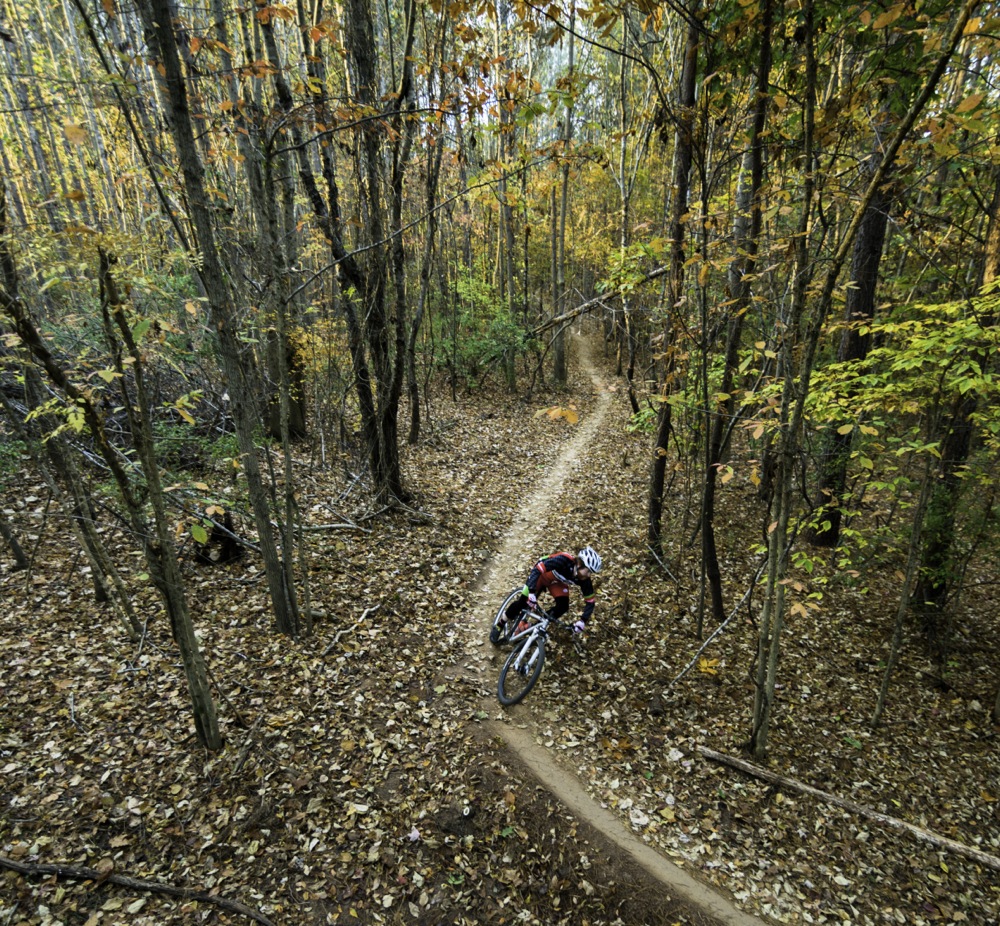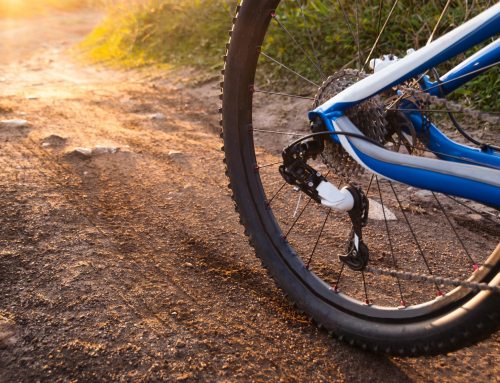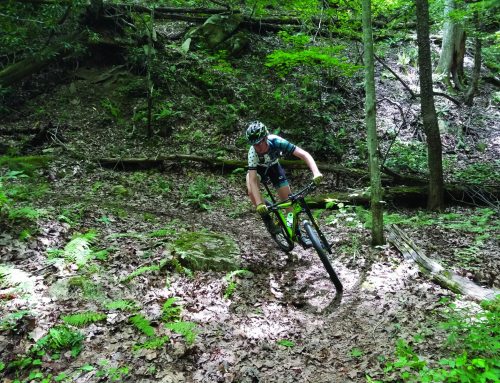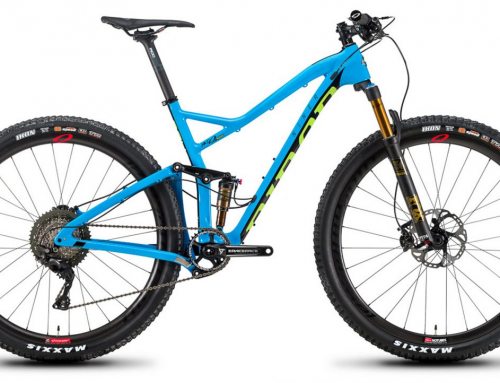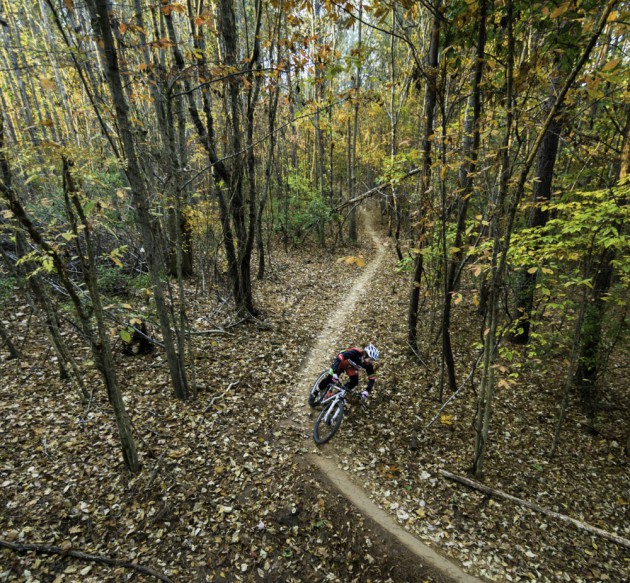
By Thomas Henson Jr.
Mountain biking is about unplugging from daily life, enjoying nature and testing your skills in the open air. So it’s ironic that some of the best safety gear is technology-based. Here are some seriously cool tools you should consider adding to your equipment.
Crash Sensor
Imagine you’re on a ride alone, off-trail and miles from where you started, when you hit a root and crash. You’re unconscious. How long do you think you’ll be lying there before help can locate you? With the ICEdot Crash Sensor and Notification system, finding you is no problem.
ICEdot Crash Sensor is a lightweight, low-energy Bluetooth device that attaches to the back of your helmet, and is paired with the ICEdot app on your smartphone. The sensor monitors motion and impacts. If the device detects a critical force, it sounds an alarm and starts a countdown. If the countdown isn’t stopped, the app will automatically send a help signal and your GPS coordinates to 10 pre-set emergency contacts. Of course, you’ll need to be in an area that has cell phone service; otherwise the phone can’t be used to notify your emergency contacts. But the alarm on your helmet will still sound so anyone in your vicinity can hear.
The ICEdot Crash Sensor costs $149, and it comes with a one-year membership. After that, you’ll need to purchase a continuing membership ($10 per year) for the smartphone link to remain active. To learn more, visit www.icedot.org.
Trail-Friendly GPS
Garmin, the popular GPS manufacturer, has developed a device specifically for cyclists: the Garmin Edge Touring. It provides on-road and off-road navigation, with preloaded maps that can give you turn-by-turn routes on streets, trails or greenway paths.
In addition to the regular GPS features, Edge Touring allows you to input your starting point and tell the device how far you would like to ride. The device will offer three ride options for your chosen distance.
Another great feature is that you can record your rides, and share them with others via Garmin Connect. If you’re feeling adventurous, you can look at other cyclists’ rides, upload them to your device, and follow their route.
The Garmin Edge Touring attaches easily to your handlebars, so the maps are always in front of you. It costs $249.99, and Garmin Connect is free. In fact, you can join even if you don’t have a Garmin device, so you can see the ride maps uploaded by other cyclists. For more information about Garmin products, go to www.garmin.com. To learn about Garmin Connect, go to connect.garmin.com.
Sunglasses (Tifosi)
Because bugs, mud splashes, sun glare and whipping branches can pose a threat to your eyes, some form of eye protection is a must-have for every mountain biker. But standard sunglasses aren’t the best option because the light is different on a trail than it is on a paved road. The super-dark lenses you wear to drive will hinder your vision on a tree-covered path. Ideally, you should have different color lenses to accommodate your eyes in the different types of trails you’ll be riding. That way, you won’t have to struggle to see through the glare because your lenses are too light – or risk taking off your sunglasses because the trail is too dark.
That’s the beauty of Tifosi. Each pair comes with three changeable lenses in different colors and shades, and a hard case so you can pack them on a ride. Additional lenses can be purchased separately. All Tifosi lenses provide 100 percent protection from UVA and UVB light rays, and they are designed to be scratch-resistant and shatterproof. The choices of lenses include light transmission (l.t.) gradients—from clear (95.6 l.t.) to Smoke (15.4 percent l.t.), and everything in between. You can also choose polarized lenses or transition lenses, which automatically adjust to changing light conditions.
Depending on the model, the glasses with three lenses generally cost between $59.95 and $99.95. For more information, visit www.tifosioptics.com.
Helmets—Yes, Helmets
Even helmets are undergoing a safety revolution. Some manufacturers—including Poc and Scott—are including MIPS (Multi-directional Impact Protection System) in their design. This feature is a slip plate between the foam liner and your head. If the helmet snags on a branch or you take a particularly tough tumble, the helmet rotates slightly over the plate, diminishing the rotational forces to the brain and reducing the severity of impact-related whiplash.
Safety is not cheap. A helmet with MIPS will run about $220. But keep in mind that the most expensive helmet—or GPS, crash sensor, or sunglasses—is still much less expensive than treatment at a hospital. Ride safe!
Note: Thank you to Dave Naderman and the good folks at Cycling Spoken Here (www.cyclingspokenhere.com) for pointing out all this safety gear.
# # #
Thomas Henson Jr. is an avid cyclist, and finds much happiness in bike rides with his family and friends. He leads the complex injury litigation department of HensonFuerst Attorneys. He can be contacted at ThomasHenson@lawmed.com.


